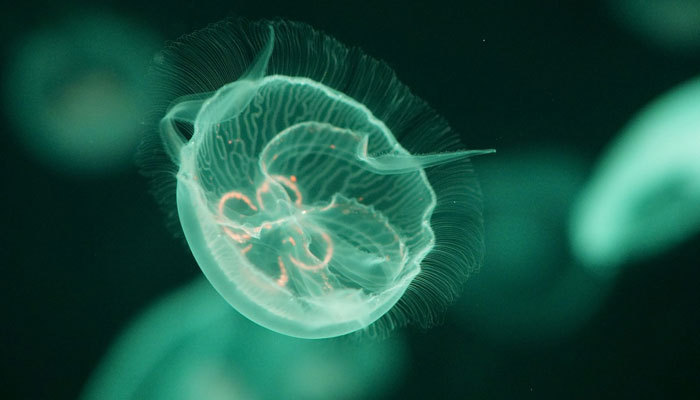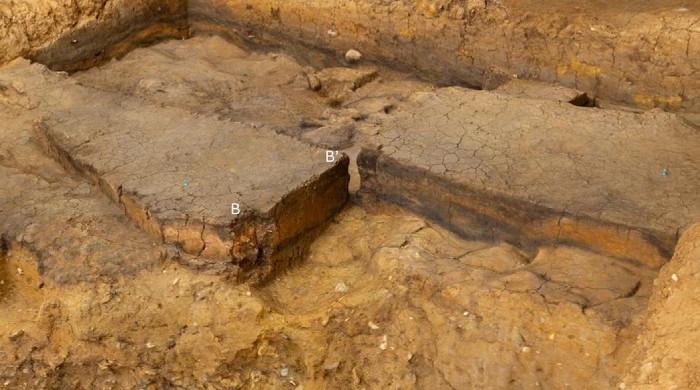Tens of thousands of venomous jellyfish swarming off England coast
Moon jellyfish photographs are common in UK waters and have mild sting however, they are not considered dangerous
June 23, 2023

Thousands of venomous jellyfish were caught on camera by a fisherman off the coast of Dorset, in the southwest of England, as he took images of the marine creature, collectively regarded as "smack" or a "fluther" of jellyfish, near Charmouth village, reported BBC.
"It was an amazing sight and this fluther covered an area of roughly a football pitch," Chris Hinton, the fisherman, said.
According to senior BBC meteorologist David Braine, jellyfish numbers were soaring as a result of unusually high sea surface temperatures.
He said: "As the number of plankton increase due to sunlight and higher temperatures, that gives more food for jellyfish and their numbers soar.
"The increase in the jellyfish population has been attributed to factors including climate change, over-fishing and the run-off of agricultural fertilisers.”
"The rise in sea temperature and the elimination of predators such as sharks and tuna has made conditions ideal, and blooms are likely to happen much more frequently."
The moon jellyfish photographed are common in UK waters and have a mild sting however, they are not considered to be dangerous.
Earlier this month, people also spotted the glowing UK beaches with a blue colour during the night, leaving people amazed and curious because of a maritime organism called bioluminescent plankton.
These lightings in the plankton occur when chemical reactions take place in the living creature. And in the case of plankton, luminosity is visible when plankton is moving in the ocean.
This phenomenon can be witnessed in several parts of the UK at a particular time of the year in the areas like Carmarthen, the Gower and Porthcawl in Wales, or Cornwall.
However, it is reported to be found in tropical areas and warm seas such as the Caribbean or Southeast Asia.
People have been fortunate enough to snap the occurrence in the summer seasons showing beaching lighting up.
According to WalesOnline report, Thomas Winstone took a brilliant picture of the plankton in south Wales — and the image is really dramatic.









